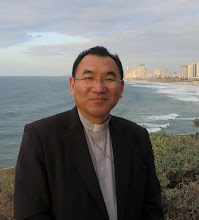
The "KA-SHO-REN", Catholic Association of Disabled Persons of Japan is organising their 10th National Assembly from tomorrow to Sunday in Niigata. The venue is Niigata Sogo Fukushi Kaikan, the social welfare center run by Niigata city, which is near the JR Niigata station. Main theme of the assembly is "Realising the Reign of God through our daily life - depart from isolation to trust". The assembly will begin with a lecture by Rev.Fr. Nobuo Masakawa, CMF at 1 pm on Saturday and will close with Mass at 10:30 am on Sunday which will be presided by myself.
More than 200 people are expected to attend the function including disabled persons themselves and other volunteers to support them. Catholic doctors and nurses in Niigata are also joining the function to be ready to help. According to the committee member in Niigata, it has been very difficult to meet the requests from central office of the association since gathering volunteers in Niigata is comparatively not so easy like big cities such as Tokyo which had hosted last assembly 3 years ago. It was expected that the assembly would provide a turning point for Niigata to start organising a local association for disabled persons. I really have to thank all these members of the committee to prepare for the function with limited resources. Also I pray for the blessing of Almighty Father for the success of this 2-days assembly.










